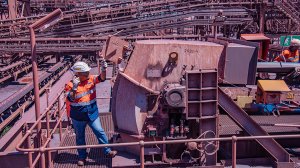In bulk materials handling applications transfer points are critical locations where materials are moved between different conveyor belts or from conveyors to storage areas. Custom-engineered transfer point solutions that optimise material flow, minimise wear and enhance safety reflect the latest trends in design and functionality.
Weba Chute Systems asserts that its innovative approach to transfer point technology and its custom-engineered solutions ensure smooth material flow, reducing impact angles and directing materials in a controlled manner.
Weba Chute Systems CEO Mark Baller explains that the company’s designs minimise wear and tear on both the chutes and downstream conveyor systems, lowering downtime and maintenance costs.
Baller says that the challenge to reduce material spillage has driven innovation in transfer point technology, explaining that spillage not only results in material loss but also increases maintenance and poses safety risks.
“We also incorporated advanced dust and spillage control features into our designs, and specifically the controlled flow achieved by Weba chutes reduces turbulence and material scatter which helps to contain dust and minimise environmental and health risks,” he says.
The company says it also focusses on safety, with chute designs that provide easy access for maintenance and robust safety barriers to protect workers. The integration of new technologies, such as sensors and remote monitoring systems, enables real-time data collection on chute performance, allowing operators to anticipate maintenance needs and avoid unexpected downtime.
Baller explains that the use of advanced computational fluid dynamics modelling allows engineers to simulate and analyse material flow at transfer points with great precision.
“By understanding how materials behave as they pass through these junctures, our engineers can identify potential problem areas, such as blockages or high wear zones, and adjust the design to ensure a smoother, more controlled flow. This approach helps to reduce impact and abrasion, extending the lifespan of the equipment and minimising maintenance requirements,” Baller continues.
Material choice is also a critical factor, with a growing emphasis on wear resistant materials that can withstand the harsh conditions typical of bulk materials handling environments. Abrasion-resistant steel, ceramic liners and composite materials are increasingly being used to line chutes and other components exposed to high impact or abrasive materials. These materials help to enhance the durability of the equipment and reduce downtime.
EMAIL THIS ARTICLE SAVE THIS ARTICLE
To subscribe email subscriptions@creamermedia.co.za or click here
To advertise email advertising@creamermedia.co.za or click here













